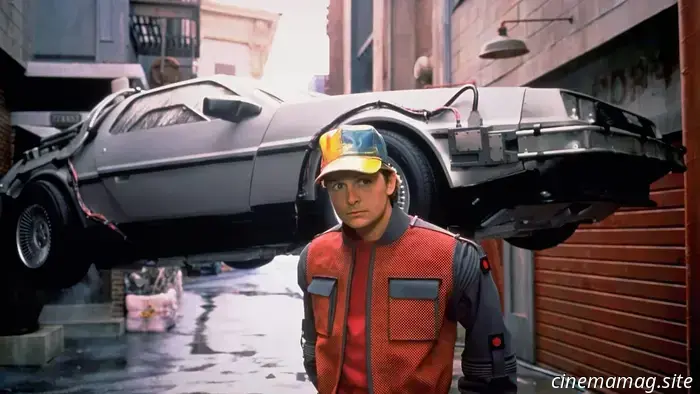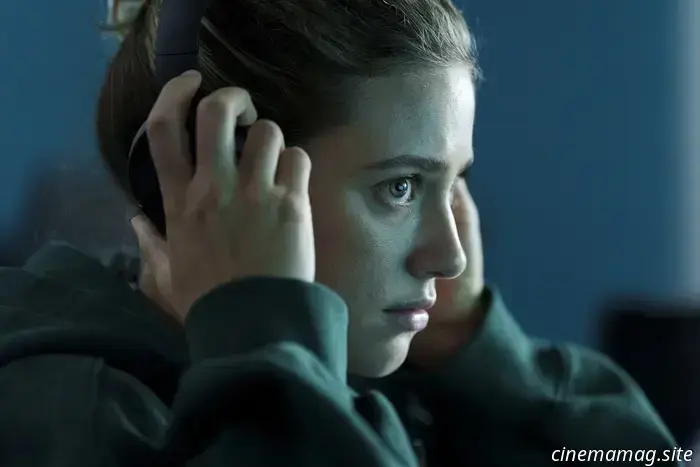How Filmmakers Incorporate Science to Create Futuristic Movies
Creating a film that feels as though it belongs to the future is not merely an artistic endeavor; it involves significant scientific rigor as well. Contemporary filmmakers examine actual research to ensure their narratives appear plausible, even when set on far-off worlds. While a substantial budget can assist, meticulous planning is of greater importance. Writers review NASA documents, designers consult with engineers, and animators study physics videos to understand the behavior of light. Even students honing their essay-writing skills rely on dependable services like Speedypaper, demonstrating that factual clarity can enhance creative output. Similarly, clear data drives a film crew to envision grander concepts while staying anchored in reality. Although viewers may not catch every nuance, their subconscious can recognize when the logic behind a flying car feels authentic. This blend of fact and fiction is central to effective science fiction, captivating audiences who are eager to explore what may become reality in the coming years.
The Scientific Foundation of Story Concepts
Exceptional futuristic films often originate from inquiries taken directly from scientific research. Questions such as "What if plants could communicate?" or "What if time reversed?" serve as catalysts for scripts when writers collaborate with scientists who delve into these concepts daily. Chemists might elucidate how memory can be encoded in crystals while physicists might discuss wormholes over coffee with screenwriters. By combining clear delineations with imaginative elements, the team keeps the narrative compelling while adhering to scientific principles. This stage is crucial as viewers can quickly identify faulty logic. If a protagonist is depicted traveling faster than light, the script must offer at least a suggestion of how that occurs, even if the explanation is fictional. Authentic theories provide that suggestion. Additionally, this collaboration can stimulate new scientific inquiries; sometimes, research follows a movie rather than precedes it. In essence, science provides filmmakers with a wealth of innovative plot ideas, and thoughtful filmmaking transforms these ideas into memorable journeys that linger in audiences' minds long after the film ends.
Crafting Future Worlds with Real Data
Once the foundational concept is established, designers work on constructing a convincing world around it. They begin by collecting concrete information from advanced areas like climate modeling, urban planning, and materials science. For example, if a city is depicted floating above the ocean, the art team examines real megastructures, wind patterns, and buoyancy principles to determine shapes capable of withstanding a storm. Cartographers are then tasked with sketching streets, power grids, and drainage systems, ensuring that every frame—regardless of its duration—feels authentic. Even if audiences never see those schematics, the underlying logic is embedded within each shot, fostering trust. This same method applies to costumes and props, where a luminescent fabric might draw inspiration from real bioluminescent fibers currently utilized in medical technology. By tracing designs back to tangible experiments, filmmakers avoid arbitrary choices, instead illustrating a future that feels just within reach. This adherence to data transforms background elements into a subtle character that enhances the storyline without overshadowing it.
Visual Effects: Transforming Formulas into Visuals
Visual effects represent the intersection of artistry and mathematics. Software developers dissect natural phenomena, such as smoke or water, into a series of mathematical principles known as algorithms. When a director requests a whirling purple storm on Mars, the team not only creates the visuals; they also program how dust would react in reduced gravity and thinner atmosphere. Particle simulations, based on the same equations used to analyze hurricanes, govern each swirl. Consequently, the resulting storm behaves differently from one on Earth, even if its colors evoke fantasy. Lighting technicians also utilize optics; by inputting the actual wavelength of laser light, they ensure that reflections on metallic helmets appear realistic rather than cartoonish. This attention to detail prevents the audience from disengaging due to an uncanny feeling. Visual effects professionals acknowledge that stylistic decisions sometimes require bending the rules, but a solid scientific foundation lets them identify which liberties can be taken without compromising plausibility.
Designing Advanced Technology for Film
When characters employ gadgets that are not yet available, viewers scrutinize for insights into their functionality. Prop designers frequently begin with patents for cutting-edge devices like foldable batteries or quantum chips. They ponder, "What might this look like in two decades?" By extrapolating existing designs just enough, they create tools that seem ahead of their time while still being connected to current research. For instance, a wrist computer aboard a spacecraft might utilize gesture control rooted in today’s motion sensors, though the final product compresses the technology into an elegant bracelet. Color choices also rely on scientific principles: screens emitting blue light may imply lower-energy photons, suggesting safe proximity to skin. Sound departments contribute as well by capturing the sounds of actual servo motors, layering them beneath fictional beeps, so each click implies hidden mechanisms. Collectively, these elements transform a mere plastic shell into believable technology, leading audiences to hope it will soon become commercially available.
The Importance of Real Scientists on Set
The inclusion of a science consultant was once uncommon, but
Other articles
 7 Facts About John DeLorean You Probably Didn't Know
John DeLorean was a visionary and dreamer with an intriguing life, as depicted in Netflix's Myth & Mogul.
7 Facts About John DeLorean You Probably Didn't Know
John DeLorean was a visionary and dreamer with an intriguing life, as depicted in Netflix's Myth & Mogul.
 Complete collection of covers for Marvel's Deadpool/Batman #1 unveiled
Marvel Comics has officially revealed the complete collection of covers for Deadpool/Batman #1, which represents Marvel's contribution to the two-issue crossover event with DC Comics, set to release next month. The issue features a primary storyline by Zeb Wells and Greg Capullo, bringing together the Merc with a Mouth with […]
Complete collection of covers for Marvel's Deadpool/Batman #1 unveiled
Marvel Comics has officially revealed the complete collection of covers for Deadpool/Batman #1, which represents Marvel's contribution to the two-issue crossover event with DC Comics, set to release next month. The issue features a primary storyline by Zeb Wells and Greg Capullo, bringing together the Merc with a Mouth with […]
 Marvel Rivals: Hellfire Gala #1 - Comic Book Sneak Peek
Marvel Rivals: Hellfire Gala #1 will be available in comic shops and digital platforms this Wednesday. Take a look at the official preview of the issue below… INTERDIMENSIONAL PARTY CRASHERS?! When the Krakoa from the timestream-connected universe of Marvel Rivals hosts a Hellfire Gala, the heroes of the Multiverse gather in their best attire to enjoy some wine […]
Marvel Rivals: Hellfire Gala #1 - Comic Book Sneak Peek
Marvel Rivals: Hellfire Gala #1 will be available in comic shops and digital platforms this Wednesday. Take a look at the official preview of the issue below… INTERDIMENSIONAL PARTY CRASHERS?! When the Krakoa from the timestream-connected universe of Marvel Rivals hosts a Hellfire Gala, the heroes of the Multiverse gather in their best attire to enjoy some wine […]
 In the trailer for American Sweatshop, Lili Reinhart becomes entangled in the dark web.
Brainstorm Media has unveiled a trailer, poster, and images for American Sweatshop, the forthcoming mystery thriller that serves as Uta Briesewitz's debut as a feature director. Lili Reinhart, from Riverdale, plays Daisy, a social media moderator responsible for eliminating inappropriate content. However, when her supervisor prevents her from reporting a video to the authorities, which [...]
In the trailer for American Sweatshop, Lili Reinhart becomes entangled in the dark web.
Brainstorm Media has unveiled a trailer, poster, and images for American Sweatshop, the forthcoming mystery thriller that serves as Uta Briesewitz's debut as a feature director. Lili Reinhart, from Riverdale, plays Daisy, a social media moderator responsible for eliminating inappropriate content. However, when her supervisor prevents her from reporting a video to the authorities, which [...]
 Two new LEGO Harry Potter BrickHeadz sets are arriving in September.
The LEGO Group has announced two new BrickHeadz sets inspired by its Wizarding World theme. One set is based on Harry Potter and the Goblet of Fire, featuring five figures: Harry Potter, Cedric Diggory, Viktor Krum, Fleur Delacour, and a Hungarian Horntail. The other set includes Luna Lovegood and a Thestral from Harry Potter and the Order of the […]
Viewing Films Improves Learning in University Classes
Explore how learning through movies utilizes visual storytelling to enhance student engagement, improve comprehension, and enrich university education across various fields, along with practical tips for the classroom.
Two new LEGO Harry Potter BrickHeadz sets are arriving in September.
The LEGO Group has announced two new BrickHeadz sets inspired by its Wizarding World theme. One set is based on Harry Potter and the Goblet of Fire, featuring five figures: Harry Potter, Cedric Diggory, Viktor Krum, Fleur Delacour, and a Hungarian Horntail. The other set includes Luna Lovegood and a Thestral from Harry Potter and the Order of the […]
Viewing Films Improves Learning in University Classes
Explore how learning through movies utilizes visual storytelling to enhance student engagement, improve comprehension, and enrich university education across various fields, along with practical tips for the classroom.
How Filmmakers Incorporate Science to Create Futuristic Movies
Investigate how filmmakers collaborate with scientists, utilize data, and skillfully employ visual effects to create convincing futuristic movies that inspire curiosity and advance cinema technology.
